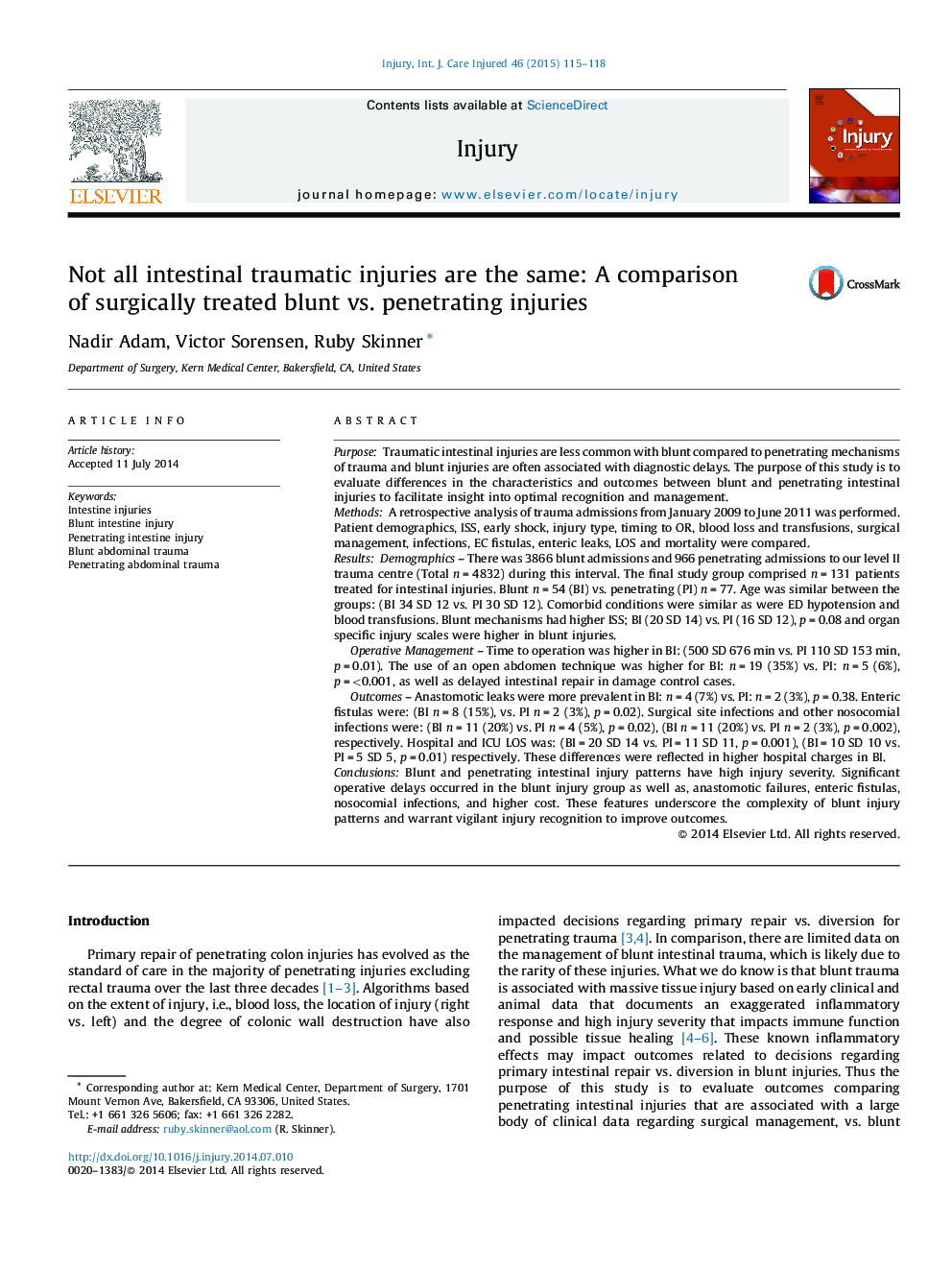| کد مقاله | کد نشریه | سال انتشار | مقاله انگلیسی | نسخه تمام متن |
|---|---|---|---|---|
| 3239181 | 1205986 | 2015 | 4 صفحه PDF | دانلود رایگان |
PurposeTraumatic intestinal injuries are less common with blunt compared to penetrating mechanisms of trauma and blunt injuries are often associated with diagnostic delays. The purpose of this study is to evaluate differences in the characteristics and outcomes between blunt and penetrating intestinal injuries to facilitate insight into optimal recognition and management.MethodsA retrospective analysis of trauma admissions from January 2009 to June 2011 was performed. Patient demographics, ISS, early shock, injury type, timing to OR, blood loss and transfusions, surgical management, infections, EC fistulas, enteric leaks, LOS and mortality were compared.ResultsDemographics – There was 3866 blunt admissions and 966 penetrating admissions to our level II trauma centre (Total n = 4832) during this interval. The final study group comprised n = 131 patients treated for intestinal injuries. Blunt n = 54 (BI) vs. penetrating (PI) n = 77. Age was similar between the groups: (BI 34 SD 12 vs. PI 30 SD 12). Comorbid conditions were similar as were ED hypotension and blood transfusions. Blunt mechanisms had higher ISS; BI (20 SD 14) vs. PI (16 SD 12), p = 0.08 and organ specific injury scales were higher in blunt injuries.Operative Management – Time to operation was higher in BI: (500 SD 676 min vs. PI 110 SD 153 min, p = 0.01). The use of an open abdomen technique was higher for BI: n = 19 (35%) vs. PI: n = 5 (6%), p = <0.001, as well as delayed intestinal repair in damage control cases.Outcomes – Anastomotic leaks were more prevalent in BI: n = 4 (7%) vs. PI: n = 2 (3%), p = 0.38. Enteric fistulas were: (BI n = 8 (15%), vs. PI n = 2 (3%), p = 0.02). Surgical site infections and other nosocomial infections were: (BI n = 11 (20%) vs. PI n = 4 (5%), p = 0.02), (BI n = 11 (20%) vs. PI n = 2 (3%), p = 0.002), respectively. Hospital and ICU LOS was: (BI = 20 SD 14 vs. PI = 11 SD 11, p = 0.001), (BI = 10 SD 10 vs. PI = 5 SD 5, p = 0.01) respectively. These differences were reflected in higher hospital charges in BI.ConclusionsBlunt and penetrating intestinal injury patterns have high injury severity. Significant operative delays occurred in the blunt injury group as well as, anastomotic failures, enteric fistulas, nosocomial infections, and higher cost. These features underscore the complexity of blunt injury patterns and warrant vigilant injury recognition to improve outcomes.
Journal: Injury - Volume 46, Issue 1, January 2015, Pages 115–118
